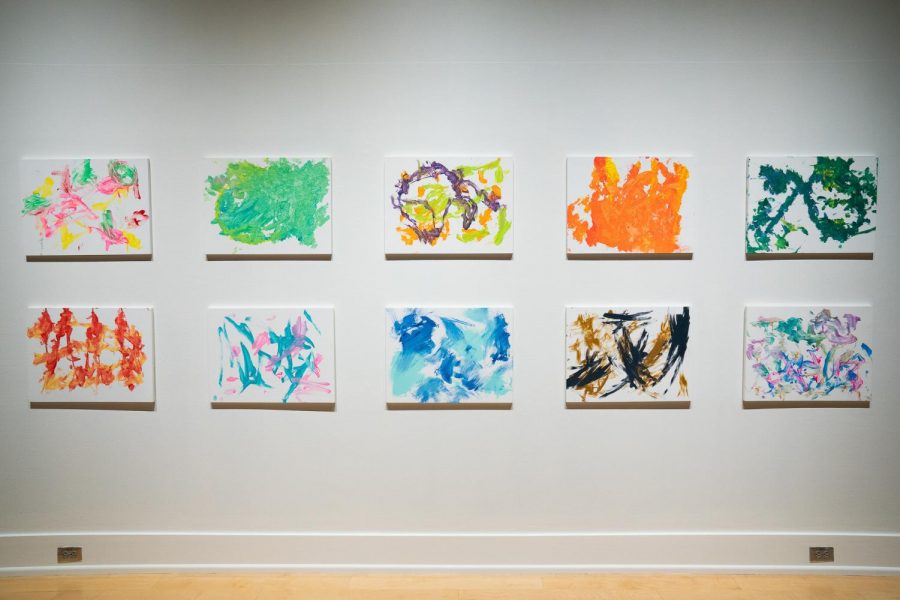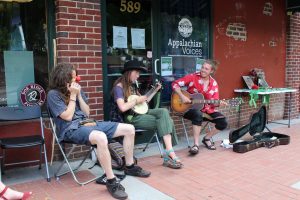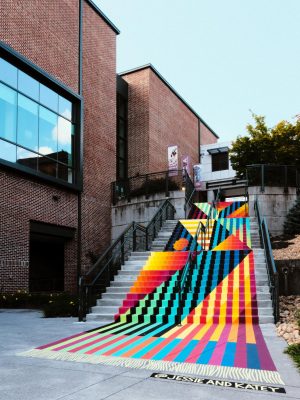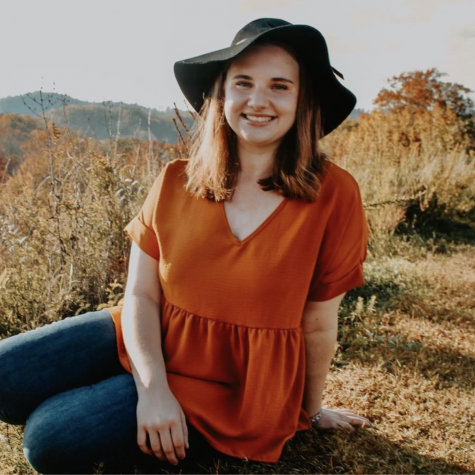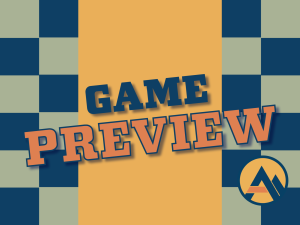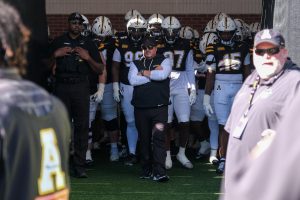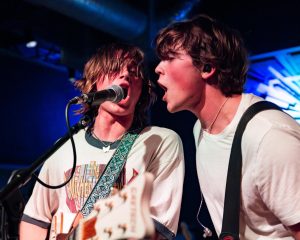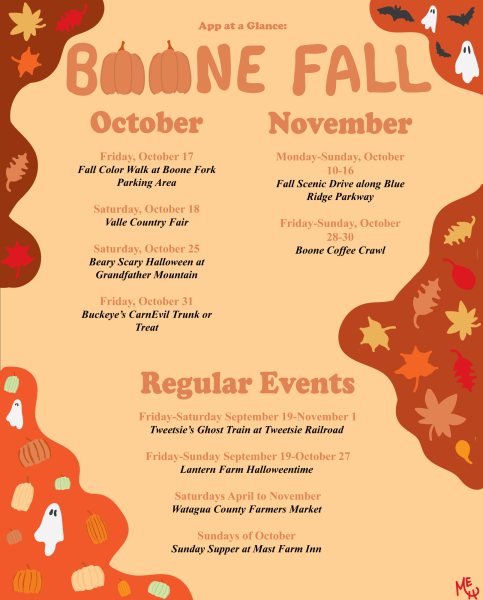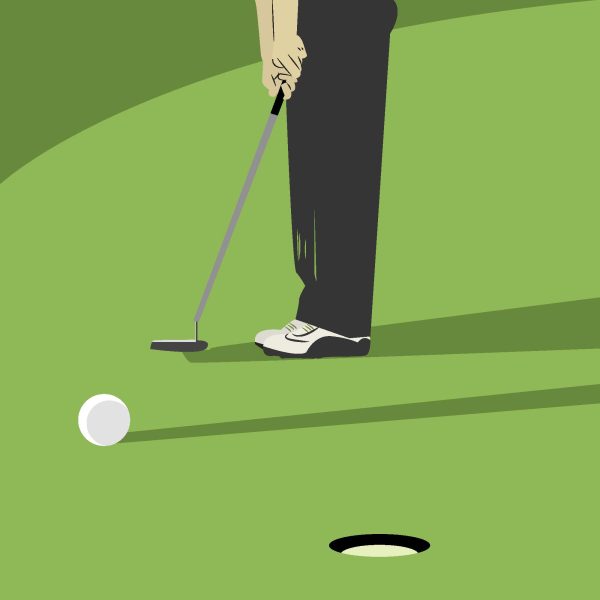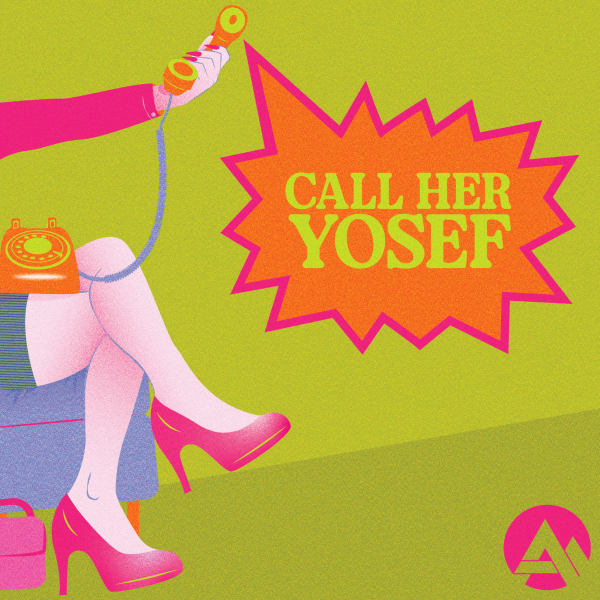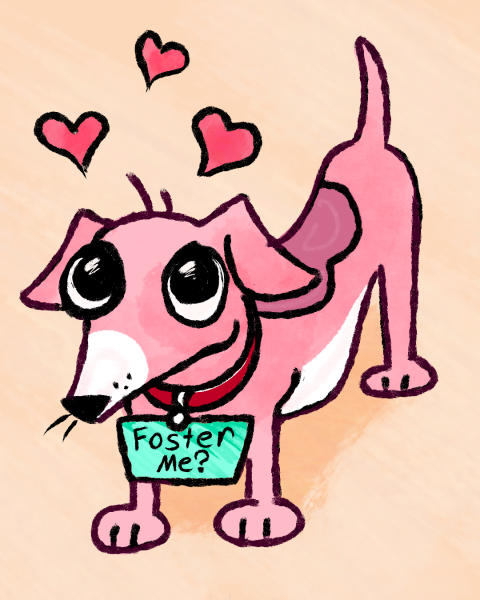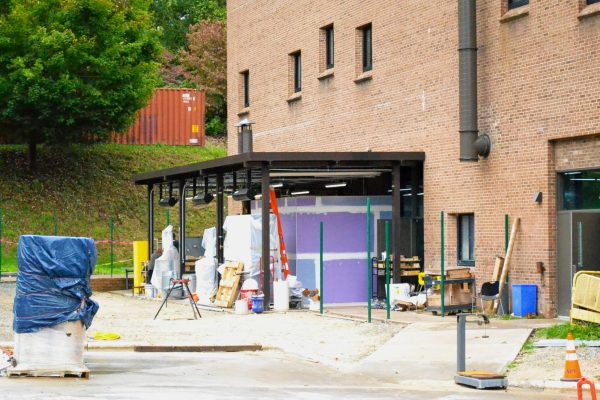Animal art: Turchin Center displays apes’ artwork
August 1, 2021
When walking through the Turchin Center, students will usually see art made by local artisans and international creators. However, the Turchin Center’s newest exhibit displays art made by creatures who live in jungles, eat fruit and share DNA with humans.
The “98.6 — A Creative Commonality,” features paintings made by chimpanzees and orangutans at Tennessee’s Zoo Knoxville and Florida’s Center for Great Apes. The two facilities provide enrichment activities for all the animals in their care, which aims to keep their minds healthy and stimulated.
“One of these enrichment activities offers apes the opportunity to paint. This includes leaving canvas and paints out in their enclosure that they can play with,” said Craig Dillenbeck, Turchin Center curatorial director. “Some apes have had the opportunity to learn how to actually use a paintbrush and will sit in front of the canvas and actually paint.”
Crystal Mugan, the lead keeper of the ape department at Zoo Knoxville, said the animals began painting in 2012 for the zoo’s “Art Gone Wild!” fundraiser.
“It was a fundraiser for the enrichment program, and they would sell artwork that all the animals across the zoo had done. We would paint with chimps and gorillas to provide artwork for that,” Mugan said.
The apes continued painting for their enrichment activities after the fundraiser ended, and Mugan said each animal has its own “signature painting style.”
“Bo definitely tries to stab the canvas. Lou probably is the most calm — he’s not trying to punch a hole in the canvas or anything. He’s just sitting there, quietly scratching the canvas with the paintbrush,” Mugan said.
Diane Beatty of Center for Great Apes said the sanctuary’s animals have been painting since its opening in 1993. The Center for Great Apes rescues great apes from the entertainment industry and from situations where they are kept as exotic pets. Beatty visited the Turchin Center exhibit in-person and said she felt proud of the animals behind the paintings.
Beatty said one black and gold painting, made by Jam and Bailey the orangutans, is fitting for the Turchin Center because it features App State’s colors.
The exhibit also features paintings made by Bubbles, Michael Jackson’s former chimpanzee, who Beatty said is probably their “most prolific artist.”
Craig Dillenbeck says the paintings, which are displayed in the Turchin Center’s Mezzanine Gallery, represent the joy that both chimpanzees and humans find in art.
“Being able to highlight that similarity that we have with them is an interesting way to build empathy and sympathy for them in the natural world,” Dillenbeck said. “The takeaway from this exhibition is to spread awareness of our relationship to the natural world and to celebrate our likenesses.”
Dillenbeck worked in the animal commissary at Zoo Knoxville for 10 years before coming to the Turchin Center. He said he’s been forming the idea for this exhibit since his time at the zoo because he “fell in love” with the chimpanzees and the great apes.
Dillenbeck and fellow curatorial director Erin Durham pitched the idea for the exhibition a year ago and said producing the exhibit began “from the ground up.”
“We contacted Zoo Knoxville and the Center for Great Apes, and they leapt at the opportunity to participate because they just truly love their chimps and their orangutans and the apes that they care for,” Dillenbeck said. “The opportunity to let them take their story into a non-traditional space like this was so exciting for them.”
Mugan said she found the idea to be “really interesting” because she’d never heard of an exhibit that displayed artwork made by animals.
“I think it’s really cool to let people know that animals have an artistic side, just like humans do,” Mugan said. “I think people sometimes forget how much DNA we share.”
Durham said the exhibit’s name refers to the 98.6% of DNA shared by humans and chimpanzees. “98.6 — A Creative Commonality” aims to remind visitors of their relationship to the natural world and build empathy for animals facing extinction.
“It’s a challenging but great opportunity to bring a different conversation into an art gallery space, and we’re just really excited to have the opportunity to talk about the great apes of the natural world and our relationship to them,” Dillenbeck said.
The exhibit opened July 2 and will run through Feb. 5. It is located in the Turchin Center’s east wing, and admission is free.
Exhibit hours are Tuesday through Thursday from 10 a.m. to 6 p.m., Friday from noon to 8 p.m. and Saturday from 10 a.m. to 6 p.m.

